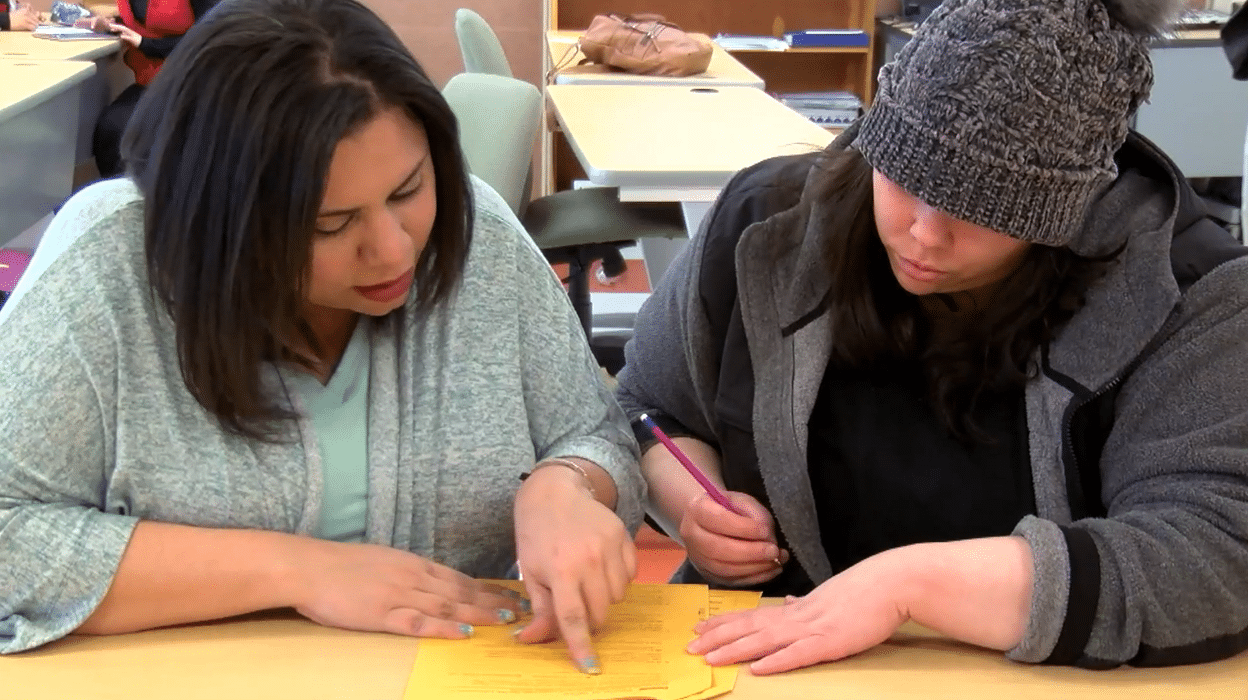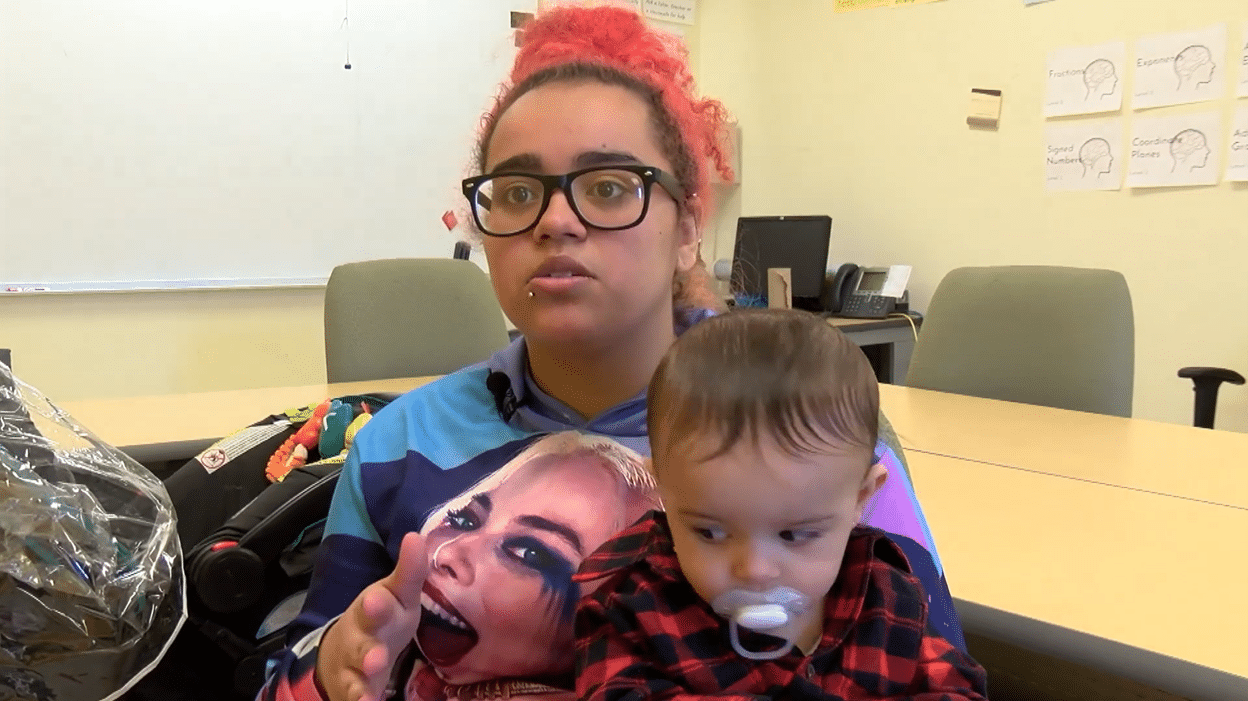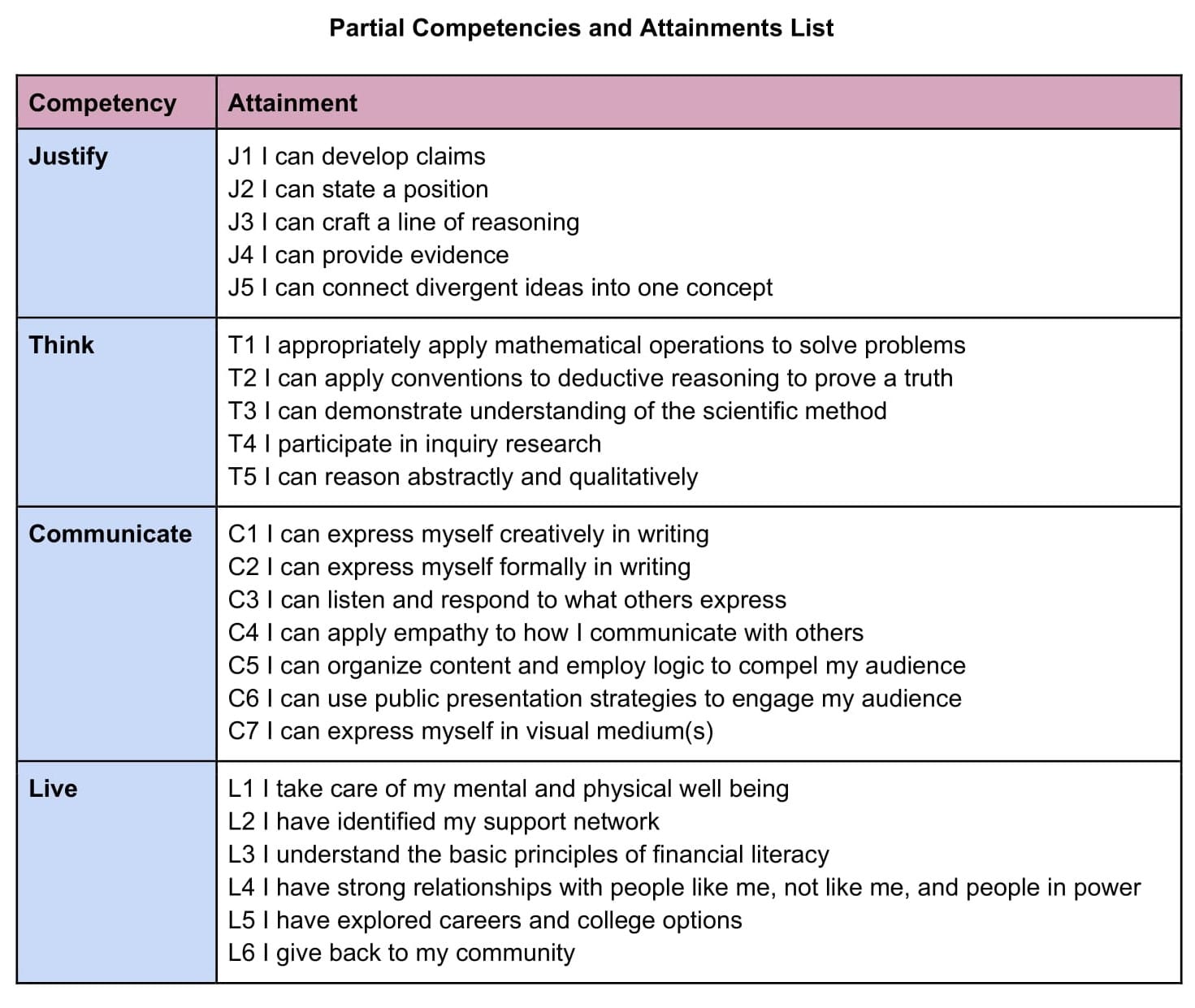The Primary Person Model and Transformative Learning Experiences at Opportunity Academy
CompetencyWorks Blog

Image: Holyoke Public Schools
The Holyoke Public Schools in Massachusetts describe Opportunity Academy as “a set of alternative pathways that allow students to continue or restart on a pathway to a diploma” who are not currently on track to graduate. The school serves students aged 16 and older who transferred from other high schools in Holyoke or nearby districts.
The first pathway is the Success Center, a competency-based program where students engage primarily in project-based, competency-based, multidisciplinary learning. The second pathway is Gateway to College, a national dual enrollment program that enables students to earn high school and college credit simultaneously. The third pathway is Lighthouse Holyoke, a private high school that offers active, personalized learning with strong socioemotional supports. The Holyoke district pays the tuition for Opportunity Academy students to attend Lighthouse. This blog post focuses on the first pathway—the Success Center.
Opportunity Academy serves about 200 students, with about 140 at the Success Center, 25 at Gateway to College, and 35 at Lighthouse. Nearly all students qualify for free or reduced-price lunch, 88% are Latino, 7% are Black, 5% are white or other, and 29% are English learners.
Most Opportunity Academy students attend the Success Center, which is part of the Engage New England network of schools that were awarded grants from the Barr Foundation. The network identifies “three high-leverage practices for schools serving students who are off track,” explained Principal Geoffrey Schmidt. The three practices are project-based learning, competency-based education, and what Springpoint Schools, the network’s professional learning provider, calls a “primary person model”—an approach in which every student has a relationship with at least one adult in the school who knows them well and provides a variety of academic and personal supports.
In years past, the Success Center’s focus was helping students pass the state exam required for graduation, which they had failed previously. Then students returned to one of Holyoke’s larger high schools. But Schmidt explained that “students got here, started having academic success—many of them for the first time in their entire academic careers—and they would say, ‘Why would I go back to one of the other two campuses? I wasn’t doing well there!’ So the school staff decided to build a model where students could go through a multi-year progression of rigorous and relevant learning, setting them up for a choice-filled postsecondary life.” That was the basis of the Barr Foundation grant application.

Image: Holyoke Public Schools
Primary Person Model
The Success Center’s “primary person” model ensures that every student has support from a caring adult who is consistently available, invested in their growth and well-being, and provides clearly defined structures to help them become leaders of their own learning. As described by Springpoint, the primary person or “advisor” is “intentionally connected to supporting academic and developmental success, and has two core functions: holding structured academic conferences with students, and serving as a liaison to other sources of student support including content teachers, student support team members, families, and external resources.”
Schmidt explained that students and staff at the Success Center have long had strong, positive relationships, and annual Panorama surveys showed that students felt that adults in the building cared about them. The primary person model has taken that strong foundation and made it more deliberate and systematic. A key element is “academic conferencing”—frequent, structured one-on-one conferences between students and advisors that focus on both short-term planning and long-term goals. Part of this process includes students completing academic and socioemotional self-assessments that become key information for setting goals, arranging supports, and assessing progress.
Springpoint’s report, Supporting Every Student: Academic Conferencing in High School, is a valuable resource for understanding the primary person model more deeply. Drawing from Zaretta Hammond’s book Culturally Responsive Teaching and the Brain, they describe the stance of a successful primary person as a “warm demander” who:
- Explicitly focuses on building rapport and trust and expresses warmth in non-verbal ways;
- Shows personal regard for students by inquiring about important people and events in their lives;
- Earns the right to demand engagement and effort;
- Is very competent with technical side of instruction;
- Holds high standards while also offering emotional support and scaffolding;
- Encourages productive struggle; and
- Is viewed by students as caring because of a mixture of personal regard and high expectations.
Students affirmed this portrait of Opportunity Academy teachers. One student had completed his graduation requirements but was still coming to school, saying that his advisor wanted him to continue improving one of his final projects. When I asked another student for advice about how to improve schools, she said “Take time to listen to the students and actually help them out … If they need one-on-one time, actually give it to them, because it goes a long way when you help them out personally. Because not every student learns the same way. At this school they give you the help you need, and they show they care.”
Transformative Learning Experiences
The other two high-leverage practices in the Success Center’s theory of action are project-based learning and competency-based education. These practices are evident in many aspects of the Success Center’s approach, and they come together most explicitly in “transformative learning experiences” (TLEs)—a series of multidisciplinary projects developed by Springpoint and refined in collaboration with the Success Center and other Engage New England schools.
A popular TLE is “You Auto Know,” in which students collect and interpret data to help a car buyer decide what vehicle to purchase based on their personal driving needs, pitching their portfolio of findings to actual community members. In a TLE on dystopian literature, students write their own dystopian short stories after reviewing dystopian art and literature and meeting several times with external writing coaches.
Springpoint worked closely with the Success Center staff to develop the strategies and structures needed to implement TLEs and other competency-based practices. Later the principal and then an instructional lead became the leaders of these changes, although Springpoint staff are still coaches in a reduced capacity. An essential part of this collaboration has been building a set of competencies and attainments (subcompetencies) that inform curriculum design and assessment. A partial list is shown below, with the complete list here and a fact sheet for students here.

Springpoint also helped the Success Center set an attainable pace for change. “I think the biggest influence there was to help us pump the breaks when we would get ahead of ourselves,” Schmidt said. “We would say, ‘By the end of this year we’re going to have all of our competencies in place,’ and Springpoint would say, ‘Oh, no—by the end of this year you’ll identify your key competencies. Then by next year you’ll have started using them in your curriculum and thinking about what it means to teach to and through the competencies.’ They helped us see that if you want it to go well, you can’t rush it, because you have to embrace some of those challenging conversations about ‘What is mastery? Are we being rigorous enough? Are we being engaging enough? Are we embedding real world, relevant learning?”
Reflecting on the process of gradually transforming the Success Center while ensuring a rigorous, high-quality experience for current students, a teacher said, “It’s great to be part of a tight-knit community where you can try new things and grow and it doesn’t have to be perfect the first time. The refinement has been the fun part—getting together with thought partners and exploring what went wrong, what went right, and how we can improve it. This has been a meetable challenge. It has felt more like an open invitation to really develop our work and move it forward.”
The next post in this series will focus on Opportunity Academy’s strategies for two key aspects of competency-based education—enabling students to make progress with varied pacing and upon demonstrated mastery (rather than seat time).
Learn More
- Strategies for Responsive Pacing at the Success Center
- Ensuring Responsiveness to Student Needs at Learn4Life Schools
- Earning Diplomas and Degrees Together – A Competency-Based Dual Enrollment School
Eliot Levine is the Aurora Institute’s Research Director